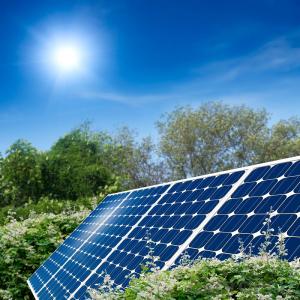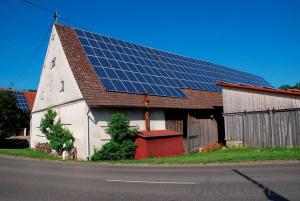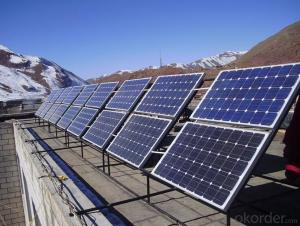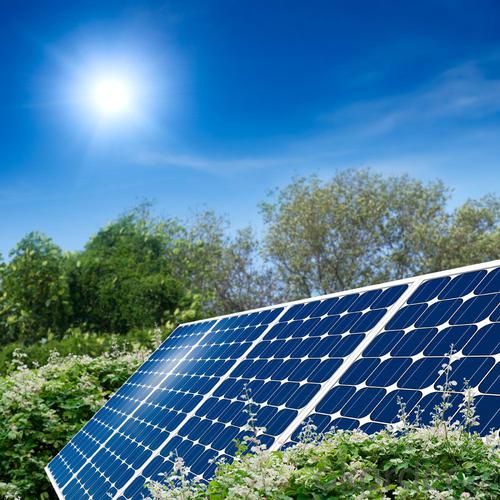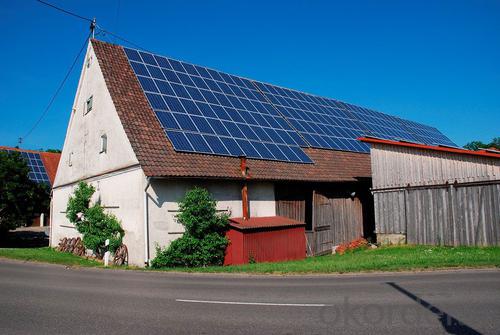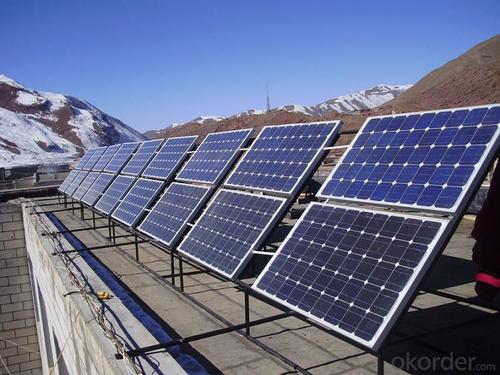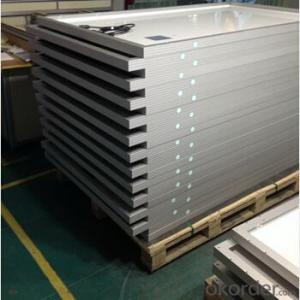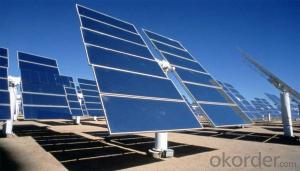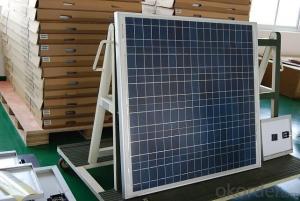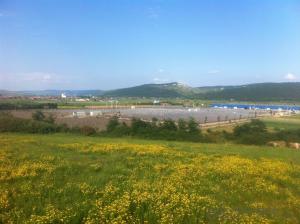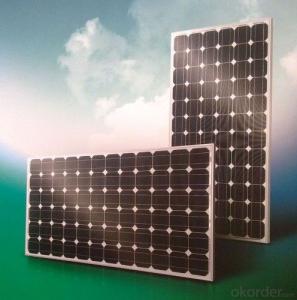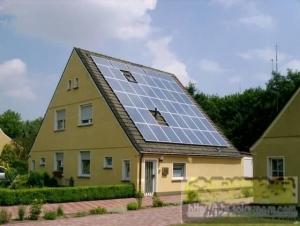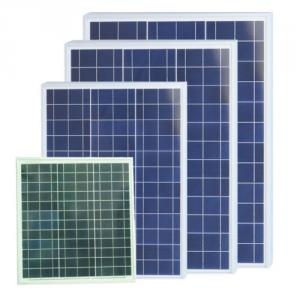CNBM Solar Monocrystalline 156 Series (50W) Solar Panels for Schools
- Loading Port:
- China main port
- Payment Terms:
- TT OR LC
- Min Order Qty:
- 100000 watt
- Supply Capability:
- 10000000 watt/month
OKorder Service Pledge
OKorder Financial Service
You Might Also Like
About us
CNBM International Corp, established in 2004, is the business entity for trade and logistic of CNBM Group.With the advantages in Cement, Composite Materials, New Building Materials and Engineering, CNBM mainly concentrate on coal, steel and construction equipments and give priority to solar and wind energy development.CNBM International is highly recognized by its business partners and clients all over the world and has established good business relationship with the customers in over 120 countries and regions all over the world.
FAQ:
Q1: Why buy Materials & Equipment from OKorder.com?
A: All products offered byOKorder.com are carefully selected from China's most reliable manufacturing enterprises. Through its ISO certifications, OKorder.com adheres to the highest standards and a commitment to supply chain safety and customer satisfaction.
Q2: What is a solar PV module?
A: A solar PV module consists of many solar cells that are connected together (typically in series) and packaged in a frame (typically made of aluminum).
Q3: What are the advantages and disadvantages of monocrystalline solar PV modules?
A: Monocrystalline solar PV modules are the most efficient type of solar PV modules, with the exception of CdTe thin film solar PV modules. As a result, monocrystalline solar PV modules are more expensive when compared to almost all other types of solar PV modules.
Q4: What is the typical service life of a solar PV module?
A: The typical life of a PV module is 25 years. However, superior quality PV modules boast service lives up to 35-40 years (electrical generating capacity is often reduced, however by that point).
Q5: What certifications do you have?
A: We are specialized in the photovoltaic field, with a focus on solar cells, modules and photovoltaic power generation systems. We employ advanced monocrystalline and polycrystalline silicon solar cell manufacturing equipment, producing highly efficient and reliable products sold in Europe, the Americas and Australia. Our company has passed ISO9001 quality management system certification, and our products have obtained TUV-IEC, CE and ISO certification.
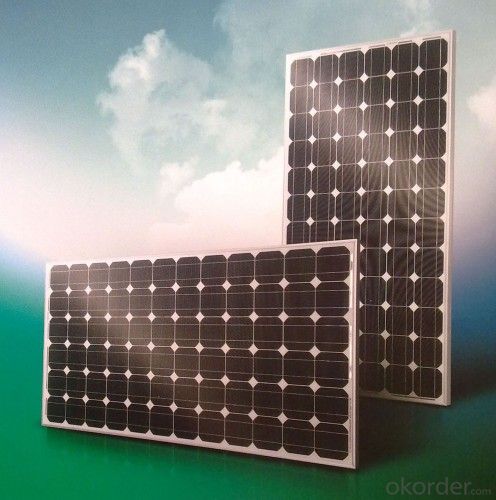
Data sheet
| Characteristics | |
| Max Power Voltage Vmp (V) | 17.4V |
| Max Power Current Imp (A) | 2.85A |
| Open Circuit Voltage Voc (V) | 22.4V |
| Short Circuit Current Isc (A) | 3.04A |
| Max Power Pm (W) | 50W |
| Temperature Coefficient of Cells | |
| NOCT | 47℃±2℃ |
| Temperature Coefficients of Isc (%/℃) | 0.06% |
| Temperature Coefficients of Voc (%/℃) | -0.32% |
| Temperature Coefficients of Pmp (%/℃) | -0.45% |
| Mechanical Data | |
| Type of Cells (mm) | Mono156×52 |
| Dimension | 700×510×30mm |
| Weight | 4.5kg |
| NO.of Cells and Connections | 3×12=36 |
| Limits | |
| Operating Temperature | –45°C to +80°C |
| Storage Temperature | –45°C to +80°C |
| Max System Voltage | 700V |
Process is as follows:
1, the battery test
2, positive Welding - Inspection –
3, on the back of cascading - Inspection –
4, laying (glass cleaning, material cutting, glass pre-processing, laying) –
5, laminating –
6, to flash ( to the side, cleaning) –
7, fitted border (glue, loading angle keys, punching, install box, scrub I glue) –
8, the welding junction box –
9, high-pressure test –
10, component testing -- -
11 appearance inspection, packaging and storage;
- Q: I am researching several solar panels to install in my house. I would like to use a 40 watt panel to connect, through a solar battery controller, to a battery or two. I would then like to use the solar panel (40 watts) to charge the battery(ies) for emergency use. Once charged, and when needed, I would like to use the battery(ies), 2 volt deep cycle, to power several LED lamps. Since I am new to solar power I had several questions...Is a 40 watt panel strong/large enough to charge a 2 volt deep cycle battery or two?How long would it take to charge one of these batteries?What would be the expected cost to purchase necessary supplies? (With the solar panel, battery controller, and MC4 cabling I've found I have an expected cost of roughly $00.00 with batteries)Would this be difficult for someone with little experience in this field?
- There okorder / Why pay thousands of dollars for solar energy ($27,000 average cost) when you can build your own solar panel system for just a fraction of the retail cost. You can build a single solar panel or you can build an entire array of panels to power your whole house. Some people are saving 50% on their power bill, some people are reducing their bill to nothing. But what’s most impressive is that just by following these instructions some are even making the power company pay them!
- Q: discription how does solar panels save energy
- How DO solar panels save energy. Learn english!
- Q: How do solar panels affect the property's curb appeal?
- Solar panels can enhance a property's curb appeal by providing a modern and environmentally friendly image. The sleek and futuristic design of solar panels can add visual interest and a sense of innovation to the property, making it stand out in a positive way. Additionally, the perception of the property being energy-efficient and sustainable may increase its desirability among potential buyers or tenants.
- Q: If you were to shine, for example, heat lamps onto the solar panel along with the sun, will the solar panel eventually not work? Or will they produce more light as long as more light is directed onto them.
- A photovoltaic cell will only be 'sensitive' to a band of radiation...and would probably not even 'see' the energy from a heat lamp. So, no, the solar panel would not be 'overworked' if somehow you could put 2 or 3 suns in the sky at once. It would simply ignore, so to speak, the photons that it didn't need. But, the heat from the heat lamp, or the extra photons, would eventually heat up the glass and the plastic the thing is made of, and it would fail prematurely.
- Q: When I make a solar panel, what do I use to store the energy. For example I am going to make a solar panel to power my lights in my room. But I dont want the lights only to come on when the sun is out because that would be very pointless. So... Do I use the panels to charge something like a car battery and then run wires from the battery to an extension chord which will go to a surge protector? It sounds awesome, but I have to put it all together. The help is very appreciated. Thank you guys.
- Homemade okorder
- Q: Dont/Cant work alone?when you buya asolar panel you mUST GET bATTERIES, voltage regulators and many else stuff?cant they just work directly? or can i use normal batteres like Car batteries?The one who Really knows 0 pts. thanks
- You do not need batteries unless you want power at night, you don't need a regulator unless you'll be using your panels to power anything other then what the voltage of the panels is (ie 2v panel = 2v llight bulb) 3.You can use them directly or you can use car batteries (though deep cycle batteries are better).
- Q: Can solar panels be installed on backpacks or camping gear?
- Yes, solar panels can be installed on backpacks or camping gear. These portable solar panels are designed to be lightweight and flexible, making them ideal for outdoor activities. They can capture solar energy and convert it into usable electricity to charge devices such as phones, cameras, or portable batteries while on the go.
- Q: Just curious.
- Create okorder /
- Q: Can solar panels be damaged by hail?
- Yes, solar panels can be damaged by hail. Hailstones can cause cracks or breaks in the glass surface of solar panels, potentially reducing their efficiency or causing them to stop working altogether. However, the extent of damage largely depends on the size and intensity of the hailstorm, as well as the quality and durability of the solar panels.
- Q: Can solar panels be installed on satellites?
- Yes, solar panels can be and are often installed on satellites to generate electricity from sunlight for powering the satellite's various systems and instruments.
Send your message to us
CNBM Solar Monocrystalline 156 Series (50W) Solar Panels for Schools
- Loading Port:
- China main port
- Payment Terms:
- TT OR LC
- Min Order Qty:
- 100000 watt
- Supply Capability:
- 10000000 watt/month
OKorder Service Pledge
OKorder Financial Service
Similar products
Hot products
Hot Searches
Related keywords
